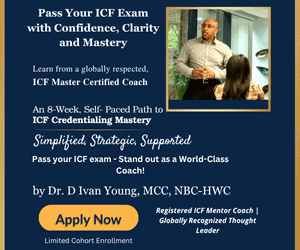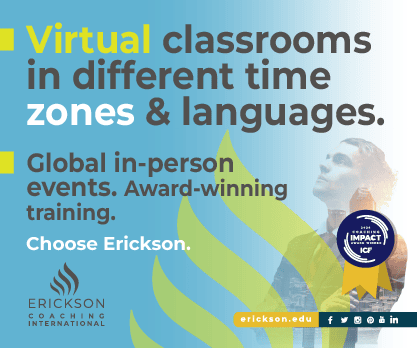Featured Post
Explore the Latest Posts
Search
Topic
Post Type
Audience Type
Author
From Check-the-Box to Culture Shift: Becoming a Sustainable Coaching Culture
There’s a quiet revolution happening inside organizations — and it doesn’t roar. It listens. It…
Cultivating Coaching Cultures That Shape Individual Contributors Into Leaders
In my coaching work with organizations, I continue to see a recurring…
Walking the Talk: Reflective Practice for Coaches
Embodying presence and self-care through ICF Competency 2. This article explores how…
Belonging Beyond Numbers: How ICF Demographic Trends Are Shaping the Future of Coaching
What does it really mean to belong? For the International Coaching Federation…
Why You Feel Stuck and How Coaching Helps
It doesn’t always begin with a dramatic event. Sometimes, it arrives quietly.…
Professional Coaching Relationships That Work: Respect, Boundaries, and the Art of Mutuality
This post comes from Dr. D. Ivan Young, an ICF Business Solutions…
What to Expect and How to Prepare for a Coaching Session
Have you ever felt like your mind is full of distracting noise…
Measuring Coaching ROI and the Ripple Effect
A Moment of Realization: When Coaching ROI Becomes Visible “I never envisioned…
Why Coaches Need Other Coaches
Setting the Foundation When you’re learning about the field of coaching while…
Staying OPEN: A Coach’s Framework for Working With Bias
As coaches, we take pride in staying present, holding space, and trusting…
The Energy Within: Powering Leadership in a Changing Energy Landscape
The Global Growth Blog Series | Part 2 ICF’s Global Growth blog…
The Foundations of Good Coaching: Clarity, Connection, and Integrity
If you’ve ever wondered what makes coaching different from advice-giving or therapy,…
Coaching for Change: MCII and ICF Empower Malaysian Educators
Across Malaysia, teachers and school leaders face growing pressures: managing heavy workloads,…
Expanding Coaching Possibilities With the Coaching Spectrum Framework™
When I discovered coaching 14 years into my career as an occupational…
Bringing Cultural Humility Into the Heart of Coaching
As coaches and coach educators, we have seen how powerful coaching can…




















